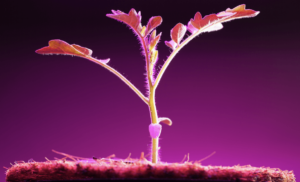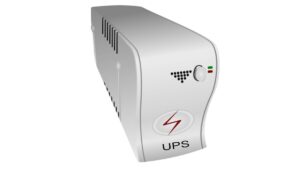TECHNOLOGY
What Is the Best Light Spectrum for Plant Growth?

Plants are living creatures that need different conditions to grow and become stable. They are dependent on water, minerals, and light to grow. Yet the quality of the light matters, too. The light’s quality, especially regarding the spectrum, is of prime importance.
Spectrum grow lights play a vital role for plants and their proper development. This is particularly critical for indoor plants. The way they react to light varies depending on their life stage. Planting seeds and watering are not the only aspects of gardening. It involves understanding the demands of plants at the very microscopic level.
Plants are autotrophs. Through a process called photosynthesis, they are able to generate their own food with the help of sunlight. This energy conversion doesn’t just happen in broad sunlight; it needs specific light wavelengths to trigger growth stages.
Light is necessary for plants to develop and flourish. However, not every light emits the same type of wavelength. Depending on different light wavelengths, plants grow differently. This is exactly what the concept of light spectrum is all about.
Unlike the outside world, indoor spaces do not have a full sunlight spectrum. Hence, duplicating this light is vital. It is not just about mimicking sunlight to grow plants but also mimicking the correct quality of light for proper growth.
Full spectrum grow lights mimic sunlight. They give plants a mix of different wavelengths. Like sunlight, these lights contain blue, red, green, and far-red light. It creates the ideal condition for the plants to grow and develop smoothly. Because of this, they tend to be perfect for growing plants inside. They provide the light spectrum for photosynthesis and promote plant health.
The growers can mimic the natural light, which plants need, through the use of full spectrum LED grow lights because lighting is essential for the production and wellness of plants.
Growcycle Company has an LED light inventory that covers a variety of options. These are best for indoor plant cultivation. Their full spectrum LED grow lights offer a well-proportioned combination of Red, Blue, Green, and Far- red light. This mix makes them ideal for all plant growth stages. The lights can adjust the light’s color and brightness. This lets growers meet their plants’ specific needs.
What Is the Light Spectrum?
The light spectrum is the range of radiation that human eyes can detect. It is also called visible light. This contains every hue that can be seen in a rainbow, including violet, indigo, green, blue, orange, and yellow.
Plants are able to see more wavelengths than humans can see. This is the spectrum of plants. Plants absorb this hue to carry out photosynthesis and metabolic activities. This spectrum is “color-splitted”. Every photon has a specific set of wavelengths optimized for plant growth.
Plants need a diverse range of light wavelengths for diverse functionalities. These comprise photosynthesis, photomorphogenesis (growth and development), and photoperiodism (flowering and reproduction). Every light wavelength has a unique contribution to the growth of plants. This is why plants to grow healthily, they must have a particular spectrum of light.

Light Spectrum
The main segments include blue light, red light, and a mix of other colors that contribute to what is known as full spectrum LED light. For plants to flourish, red and blue lights are essential. The colors correspond to peaks in the action spectra. This demonstrates the responses of plants to various wavelengths.
The peaks are for photosynthesis and photomorphogenesis. Red light makes plants produce chlorophyll. Chlorophyll is used in photosynthesis to absorb light. Meanwhile, blue light is good for plants in controlling their growth and development.
The use of LED lights has advanced the indoor plant-growing process. The full spectrum LED lights function adequately for the grow lights. They use minimal energy. These technologies allow them to generate appropriate light for plants of any growth stage. Plants tend to keep themselves cooler in comparison with conventional grow lights because they produce less heat than the typical grow lights full spectrum.
What Effects Does the Spectrum of Light Have on Plant Growth?
Plants react differently to different parts of the light spectrum. This occurs at different stages throughout their life cycle:
- Blue Light (400-500 nm): It is essential during the vegetative phase of plant growth because this light promotes strong and healthy leaves. This wavelength range encourages compact, bushy growth, preparing the plant for an abundant yield.
- Red Light (600-700 nm): Red light becomes equally pivotal when the plant shifts to the flowering stage. It causes the transformation of the plants from vegetative to flowering, during which buds and fruits are formed.
- Green Light (500-600 nm): It could hardly be as important as blue or red light in such a way. Consequently, green light is useful for photosynthesis and can promote fast plant growth. Hence, it performs the function of producing chlorophyll, which is the only agent plants use to be green and healthy.
- Far-Red Light (700-800 nm): These plants undergo a change from the vegetative to the flowering stage in response to far-red light. In addition to promoting the synthesis of hormones that initiate flowering, it can enhance plant development and crop output.
The best light spectrum for plant growth is blue and red light spectrums. Knowing about grow light full spectrum, growers can manipulate light to mimic the natural sunlight. This optimizes the growth cycle of their plants.
How to Choose the Best Grow Light for Indoor Plants
When selecting a grow LED full spectrum light, consider the following factors:
- Wavelengths: It ensures the light offers a balanced spectrum with enough blue and red light for all growth stages.
- Intensity: Medicinal plants need bright light. Look for lights that can deliver high PAR. PAR measures light usable by plants.
- Energy Efficiency: Due to their reduced heat production and energy consumption, full spectrum LED lights are preferred.
- Coverage: Ensure that the growth area is adequately and uniformly illuminated.

Plant Growing Under Light Spectrum
The Bottom Line
The best light for plant growth isn’t simple. It varies by the plant’s stage of growth and its needs. Nevertheless, this combination of red and blue light spectrum is usually viewed as the most effective. It promotes overall plant health and growth. This mix encourages photosynthesis. It helps with growth and flowering. It covers the key parts of a plant’s life.
Most gardeners, especially indoor ones, use full spectrum LED grow lights. This is the most efficient way to deliver the needed light for plants. These lights typically have a mix of cool and warm light. This light is a mixture of blue, red, green, and far-red, resembling the sunlight.
Growcycle’s spectrum grow lights are high-quality and efficient. They let indoor growers achieve the best plant growth and yield. This success leads to a good harvest every cycle.
TECHNOLOGY
The Importance of Rugged UPS in Industrial Environments

One of the best solutions for maintaining operational efficiency is a rugged Uninterruptible Power Supply (UPS). Unlike standard UPS units, rugged UPS systems are designed to withstand extreme conditions and provide protection against power disruptions caused by weather, equipment problems, or other environmental factors. The adaptation of rugged technology has become increasingly important as industries strive for uninterrupted service so that their processes run smoothly and without interruption.

Understanding Rugged UPS
Rugged UPS systems are built specifically to withstand tough environmental conditions. These power supplies showcase robust designs, often featuring shock and vibration resistance along with protection against moisture and dust. In industries like oil and gas, manufacturing, and transportation, this resilience is critical because devices are frequently subjected to harsh elements.
Equipment failures can lead to significant downtime and productivity losses, highlighting the necessity of reliable power solutions that excel in reliability and operate flawlessly even in extreme temperatures or challenging situations. Utilizing systems that are compliant with industry standards can help reduce liabilities and ensure workplace safety.
Choosing the Right Rugged UPS for Your Needs
Given the numerous options available out there, you want to select the right rugged for your needs. Analyze the unique power requirements of your operations. Once you understand wattage needs and runtime expectations, you can guide your choice significantly.
Assessing the environmental conditions where the UPS will function is equally important. Temperature fluctuations, exposure to dust, or vibration levels should inform your decision-making process. Even evaluate the system’s expandability and ability to scale as operational demands increase. Evaluating the manufacturer’s reputation and support services can also provide insights into the long-term reliability and performance of the UPS system. Make sure to validate the UPS certifications to ensure compliance with industry standards.
Look for suppliers like acumentrics.com/products/rups/ that check all these boxes. After all, the selected rugged UPS must align with your operational needs and future growth plans.
The Role of Rugged UPS in Operations
A primary role of rugged UPS systems in industrial environments is to provide a seamless power transition during outages. These systems ensure that essential equipment operates without interruption, safeguarding data integrity and maintaining workflow efficiency. They allow operators to implement contingency measures during power failures without immediate pressure.
With advanced technology, modern UPS units can also regulate voltage fluctuations and protect sensitive equipment from damage caused by poor power quality. Companies dependent on high-performance machinery can experience costly downtime without a reliable power backup system.
Key Features to Consider
Several features make rugged UPS systems essential for industrial environments. First and foremost, the durability of these systems cannot be overstated. They typically come with reinforced enclosures that protect them from physical damage while allowing them to function optimally in hostile conditions. Similarly, extensive battery life is a critical feature, ensuring they can provide prolonged power support during blackouts.
The capability for remote monitoring and management is another integral component: it allows technicians to assess the performance of the UPS seamlessly. This feature enhances predictive maintenance and reduces the chances of unforeseen failures by facilitating timely interventions. Reliability and redundancy contribute to uninterrupted service even if one system experiences issues.
Benefits of Implementing Rugged UPS
Implementing rugged UPS systems yields several tangible benefits that go beyond mere power supply continuity. The primary advantage is the reduction in mission-critical downtime. Equipment that remains operational during power interruptions leads to enhanced productivity and minimized financial losses. The ability to protect sensitive equipment from power anomalies can reduce repair or replacement costs significantly.
Many industries face potential losses from data corruption due to unexpected outages, which can be alleviated through the proper use of UPS systems. The long-term cost efficiency achieved by investing in these systems far outweighs the initial capital expenditure. With an eye toward sustainability, rugged UPS systems can integrate with solar and wind energy sources, paving the way for cleaner energy options in daily operations.
The Future of Rugged UPS Technology
The evolution of technology continues to transform the landscape of power solutions, and rugged UPS systems are no exception. As industries become more automated and reliant on integrated systems, the advancements in UPS technology respond to these changes. Emerging trends include greater integration with IoT devices and enhanced machine-learning capabilities for predictive maintenance.
Improved battery technologies, most notably lithium-ion options, also promise longer lifespans and shorter recharge times, enhancing the overall functionality of rugged UPS systems. Sustainability considerations increasingly play a role in the design of future UPS solutions, allowing for more eco-friendly operations. The future landscape of rugged UPS is poised for further innovation, ensuring their place as essential components in industrial environments.

Adopting rugged UPS solutions equips businesses with the tools necessary to navigate the complexities of industrial environments. Their robust design and reliable performance mitigate risks associated with power interruptions, resulting in improved operational efficiency. Investing in a suitable rugged UPS protects equipment and strengthens the overall resilience of business operations.
TECHNOLOGY
HONOR X9c 5G: Unveiling the Latest Mid-Range Marvel

Thanks to its long-lasting battery life, sturdy build, and remarkable photography features, the HONOR X9c 5G revolutionizes the mid-range smartphone market. This gadget is packed with revolutionary technology such as the HONOR Anti-Drop Display and a 6600mAh Silicon-carbon Battery, making it perfect for those who desire style and performance without breaking the bank. With the HONOR X9c 5G, customers can enjoy all their favorite media, photos, and work apps on the go.
What Sets the HONOR X9c 5G Apart?
Design and Build Quality
The HONOR X9c 5g boasts a sleek and durable design. Its lightweight design and titanium finish make it comfortable to hold and transport. Its 7.98 mm thickness makes it both thin and ergonomically sound. The HONOR Anti-Drop Display and the fully wrapped curved screen contribute to the device’s durability. Plus, the X9c has a protective case with cushioning airbags that soak up the shock and lessen the likelihood of harm from drops.
Display Features and User Experience
The 6.78-inch organic light-emitting diode display on the HONOR X9c 5G offers breathtaking images with 1.07 billion colors. Perfect for gaming, video streaming, and web surfing, its 1.5K resolution and 120Hz refresh rate provide a seamless and responsive user experience. You can see clearly in extremely bright outdoor settings because of the peak HDR brightness of 4000 nits. Features like Circadian Night Display and 3840Hz PWM Dimming make the screen more comfortable to look at for extended periods of time. Along with the high-quality display, these features provide consumers with a viewing experience that is both spectacular and beneficial to their eye health.
Performance and Processing Power
The HONOR X9c 5G’s high-performance chipset makes short work of demanding programs and multiple windows at once. When combined with HONOR’s MagicOS 8.0, which is based on Android 14, it provides a user experience that is both efficient and streamlined. This versatile gadget is perfect for work and play because of its seamless performance in gaming, video streaming, and productivity apps. Improved processing speeds and overall efficiency are the results of the software’s integrated AI capabilities, which boost the device’s performance. The HONOR X9c provides the responsiveness and speed one would expect from a contemporary smartphone, whether one is casually surfing the web or heavily using programs.
How Does HONOR X9c 5G Handle Photography?
Camera Setup and Key Specifications
Capturing detailed and bright photographs in a variety of lighting circumstances, the HONOR X9c 5G boasts a strong 108MP Ultra-sensing camera with a big 1/1.67″ sensor. Photos taken in dim light will still come out bright and sharp thanks to its 9-in-1 pixel binning technology. With the 3x Lossless Zoom included in the camera system, users may photograph subjects far away with remarkable clarity. In addition, there are three distinct portrait modes on the camera, so you may experiment with various looks. The camera on the X9c is capable of producing professional-level images for regular shooting thanks to its big sensor and AI-powered upgrades.
Photo and Video Quality in Various Conditions
With the HONOR X9c, you can take stunning photos and record smooth videos in any light. Even in low light, the 108MP sensor and AI-assisted technologies let it produce photographs with vivid colors and precise details. Great detail, even in low light, is possible thanks to the device’s f/1.75 aperture, which lets in just the right amount of light. Optical Image Stabilization (OIS) allows the X9c to capture video that is both steady and smooth, even while the subject is in motion. Day or night, the HONOR X9c’s camera and video capture are on par with those of more costly flagship devices.
Special Camera Modes and Features
Some of the AI-powered capabilities on the HONOR X9c 5G make taking pictures even better. The AI Motion Sensing function is ideal for action photography since it records moving subjects and scenes. Furthermore, with just one press, you may eliminate undesired components from images with the AI Eraser tool. The AI Eraser can quickly and accurately erase any undesired object or annoying person from a picture without affecting the quality of the original. The X9c’s smart features make it easier than ever to take and edit stunning photographs, even for those without photo editing experience.

Battery Life and Charging Capabilities
Battery Capacity and Longevity
A 6600mAh Silicon-carbon battery provides outstanding endurance for the HONOR X9c 5G. Because of its high capacity, users will not have to worry about interruptions, whether streaming, gaming, or browsing all day long. The battery life is really remarkable, offering up to 25 hours of video streaming and 48 hours of music listening on a single charge. Users can trust their smartphone for longer periods of time without worrying about running out of juice thanks to the combination of a strong battery and AI power management. When compared to other mid-range devices, the HONOR X9c stands out due to its battery.
Fast Charging and Power Management
Fast battery charging is possible with the HONOR X9c 5G thanks to its compatibility with 66W HONOR SuperCharge. With a full charge taking less than an hour, users will not have to wait long for their phones to boot up. To top it all off, customers may make calls for up to 50 minutes even when the battery is at 2%, thanks to the AI SuperPower Saving Mode. This means they can stay connected during crucial occasions. Intelligently optimizing battery usage, the X9c’s clever power management ensures an efficient and long-lasting user experience—all without the need for regular recharging.
User Reviews on Battery Performance
The HONOR X9c’s long battery life and effective power management have been the subject of much user appreciation. A lot of people have said that the device is great for work and play because it lasts all day long, even when used heavily. Users love the rapid charging capability since it gives them hours of battery life with just a short charge period. Reliability and efficiency in battery performance are key selling points of the HONOR X9c, especially for those who rely on their phone for long periods of time.
HONOR X9c 5G: Connectivity and Software
5G Network Compatibility
Full 5G network compatibility is an assurance of quick and dependable connectivity with the HONOR X9c 5G. The X9c delivers a fluid experience whether you are playing low-latency games, downloading huge files, or streaming high-definition movies. The 5G connectivity guarantees that customers can fully utilize the speed of mobile networks for enhanced performance. The HONOR X9c maintains your connection no matter where you are, guaranteeing a seamless online experience and speedy internet access. If you want to be ahead of the curve, the X9c is the way to go because it supports 5G, which means your connectivity is future-proof.
Operating System and Updates
Running on MagicOS 8.0, which is based on Android 14, the HONOR X9c 5G offers a streamlined, user-friendly interface. This OS incorporates HONOR’s AI-driven capabilities, which improve performance and provide personalized recommendations to improve the user experience. Users are always up-to-date with the latest features and security patches because the gadget receives software upgrades often. Users can personalize their smartphone to their liking with MagicOS’s customization features, which include things like custom themes and quick shortcuts. The operating system has been fine-tuned for maximum efficiency, guaranteeing a seamless experience and effortless performance.
Additional Software Features and Customization
A number of enhancements aimed at improving efficiency and personalization are part of MagicOS 8.0 for the HONOR X9c. Without launching apps, users may interact with notifications straight through Magic Capsule, which displays further details. To enhance multitasking, Magic Portal uses AI to comprehend user intent and effortlessly directs them to pertinent applications. One notable feature is Parallel Space, which lets users set up two separate app spaces on the same device. This is useful for keeping track of personal and professional accounts simultaneously. The X9c is a great pick for people looking for a smart, adaptable smartphone because of its features, which provide efficiency, ease, and flexibility.
Conclusion
Among mid-range smartphones, the HONOR X9c 5G stands out for its great build quality, powerful hardware, and delightful user interface. The X9c is an impressive tablet for anyone looking for affordable quality with features like a 108MP camera, 6600mAh battery, and 5G compatibility. The AI-powered features and MagicOS guarantee efficiency and smooth performance, while its sturdy build, long-lasting battery, and sleek style make it perfect for everyday use. The HONOR X9c 5G is a great pick for anyone in the market for a dependable, high-performance smartphone because of its affordable price and great value.
TECHNOLOGY
Your Guide to Equipment Rental in College Station: What to Know Before You Rent

Are you planning a project that requires special tools or machinery? Renting can be a cost-effective solution for getting the job done. Let’s explore key points to consider when renting equipment in Texas.
Determine Your Project Needs
Before beginning the process, it’s important to understand the scope of the project and what specific tools will be necessary. Different tasks, whether landscaping, construction, or repairs, require particular machinery. Researching equipment rental in College Station, TX, can help identify what best meets the project’s requirements. Make a list of the needed tools and consider factors like size, power, and any attachments. Some rentals include additional accessories, while others may need separate requests.
Knowing the project requirements beforehand ensures efficiency. Clear planning helps avoid unnecessary costs by renting only the essential items.
Choosing the Right Rental Company
Selecting a trustworthy provider is essential for a smooth and reliable experience. Look for companies with positive reputations in College Station, as they typically offer dependable service and well-maintained machinery.
Important things to think about when selecting a rental company include:
- Reputation: Read reviews and ask for recommendations.
- Maintenance Practices: Well-maintained equipment performs more reliably.
- Customer Support: Responsive support for questions and issues.
- Delivery Options: Convenient for large machinery.
- Variety of Tools: Check if they offer a broad range.
Choosing a reputable provider ensures access to reliable tools and quality service, supporting a hassle-free experience.
Understanding Costs and Terms
Understanding the costs associated with renting in College Station can help manage the project budget effectively. Prices vary based on the type of tool, rental duration, and additional features. Some companies offer discounts for extended use, while others might charge extra for delivery or specific attachments. Clarifying these details upfront helps avoid surprises. Carefully review terms, including late fees or damage policies, as they vary between providers. Reading the contract thoroughly can prevent misunderstandings about charges or responsibilities. Clear knowledge of costs helps ensure the agreement fits within the project’s budget.
Inspecting Construction Tools and Tractors Before Renting
Inspecting machinery, such as construction equipment or tractors for rent, before finalizing the agreement can save time and prevent potential issues. Carefully check the condition to ensure it’s functional and meets safety standards. For heavy tools like tractors, backhoes, or excavators, look for visible signs of wear, such as cracks, leaks, or worn parts, which could signal potential problems. Many providers offer a walk-around inspection with a representative to discuss the equipment’s condition. Testing essential functions, such as brakes, hydraulic systems, or any attachments, confirms that everything operates smoothly. Examining construction machinery ensures reliability and avoids breakdowns during use. A thorough inspection promotes safety and efficiency, which is crucial for project success.
Planning for Return and Cleaning
Planning the return process helps avoid unexpected fees or penalties when renting construction machinery or tractors. Most providers in College Station have specific policies about cleaning and returning on time. Heavy machinery, especially in dusty, muddy, or construction-heavy areas, may require thorough cleaning before return.
Taking care of rented items and planning for return helps keep costs low and fosters a positive relationship with the provider. A little preparation goes a long way in making the experience successful. Keeping machinery in good condition and planning for return keeps expenses manageable and maintains a positive relationship with the rental company.
For successful equipment rental in College Station, TX, preparation and thoughtful planning are key. By understanding project needs, selecting a reputable provider, and clarifying costs and terms, renters can enjoy a smoother experience. Attention to equipment condition and proper handling helps make each rental effective and affordable. Thoughtful planning and consideration make equipment rental an easy and efficient choice for various projects.

 Cartoon9 months ago
Cartoon9 months agoUnlocking the Potential of Nekopoi.care: A Comprehensive Guide

 Game8 months ago
Game8 months agoExploring Aopickleballthietke.com: Your Ultimate Pickleball Destination

 BUSINESS8 months ago
BUSINESS8 months agoWhat Companies Are In The Consumer Services Field

 TECHNOLOGY7 months ago
TECHNOLOGY7 months agoThe Guide to Using Anon Vault for Secure Data Storage

 HOME IMPROVEMENT9 months ago
HOME IMPROVEMENT9 months agoVtrahe vs. Other Platforms: Which One Reigns Supreme?

 ENTERTAINMENT9 months ago
ENTERTAINMENT9 months agoThe Epic Return: Revenge of the Iron-Blooded Sword Hound

 HEALTH9 months ago
HEALTH9 months agoUnveiling the Mystery of Pikruos: A Comprehensive Guide

 HOME IMPROVEMENT9 months ago
HOME IMPROVEMENT9 months agoExploring the Events of 2023-1954: A Look Back in Time
















